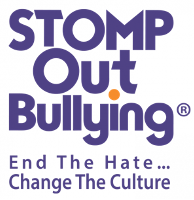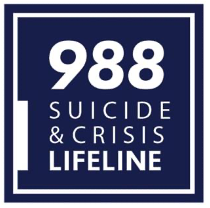A Bullying Epidemic: South Korea
- Human Rights Research Center
- Apr 2, 2024
- 4 min read
Author: Jasmyn J. Tang, MPH
April 2, 2024
Bullying remains a persuasive global detriment. Many children and adults have experienced some form of bullying during their lifetime. According to the U.S. National Center for Education Statistics, almost 1 in 4 students between 12-18 reported being bullied at school [6]. Globally, 1 in 3 learners are bullied every month with over 36% experiencing physical fights [8]. Adults are being bullied at levels similar to children. In the United States, over 30% of adults said they have been bullied with 43% admitting that this behavior has become more acceptable [1]. Living within this tragic reality, South Korea became the focus. The percentage of Seoul students being victimized in school has been the highest since 2013 with a study finding 40% of students researched participated in bullying [3][9].
In 2022, The Glory, a Korean show was released to the public. This drama portrays the story of Moon Dong-eun, and her plan for revenge against her school bullies who regularly burned her body with a scalding iron hair curler, leaving her with irreparable damage and scars. While this seems gruesome, unfortunately, the bullying itself is based on true events of a 2006 South Korean case. Watching Dong-eun’s journey of retaliation brought attention to the real violence and bullying surge that has become more malicious due to social media.
Keumjoo Kwak, a psychology professor at Seoul National University said the highly competitive environment that students face along with intense academic pressure, creates a “…highly competitive, hierarchical, and monotonous environment devoid of physical activities to expend energy” – and that can lead to some individuals bullying others “as a source of amusement”[6]. This detrimental cycle affects the mental health of teachers as well.
Even with the doubling of legal disputes involving school violence over the last couple of years, 1 in 3 victims are still unable to get any help [5][7]. South Korea does have bullying prevention committees; however, they are inept and lack professional legal experience since most members are students’ parents [4]. Even though teachers and government officials are also on the committees, these are unpaid positions.
Taking a large emotional toll on victims, bullying is a trauma with chronic symptoms. A research team led by Professor Park Ae-ri at Sunchon National University and Professor Kim Yu-na at Yuhan University shows that college students were almost 3 times more likely to attempt suicide if they had experienced school violence [3]. The study revealed that 34% of the participants reported experiencing verbal abuse, bullying, and physical violence at the hands of their peers during their childhood years. Of these individuals, 54.4% have considered suicide while 13% have already attempted to take their own life. So, what can be done?[7]
Government amendments to relevant laws to ensure efficient resolution of school bullying cases with the inclusion of bullying records in university admissions.
Victim counseling and support to overcome their trauma along with educational solutions like specialized institutions for perpetrators and education for their parents.
Preventative education for young students by teaching empathy, cooperation, and respect for others.
With measures in place, South Korea has a long way to go to deal with school violence and bullying successfully and efficiently. In an already hyper-competitive society, students and adults face stressful daily situations. Like Professor Kwak mentioned about expending energy, healthy and safe ways of releasing frustrations need to be created in both schools and work. But culture is hard to change, especially when academics signify success. Active solutions for both the perpetrators and victims must be implemented before rampant bullying becomes the norm in Korean society.
Additional Resources
South Korea
중앙자살예방센터 [Korea Suicide Prevention Center]

United States (USA)
Bully Help Hotline
Call: 1-866-488-7386
Crisis Hotline
Text HOME to 741741
Suicide Hotline
Call: 988
Glossary [via Merriam-Webster Dictionary]
Bullying: abuse and mistreatment of someone vulnerable by someone stronger, more powerful, etc.
Epidemic: affecting or tending to affect a disproportionately large number of individuals within a population, community, or region at the same time
Prosecutor (Prosecuting Attorney): an attorney who conducts proceedings in a court on behalf of the government
South Korea: country on the Korean Peninsula in eastern Asia bordering on the Yellow, East China, and East seas; capital Seoul
Suicide: the act or an instance of taking one's own life voluntarily and intentionally
Sources
Adult bullying: Survey finds 31% of Americans have been bullied as an adult. (2019). Doctors of Osteopathic Medicine. https://findado.osteopathic.org/adult-bullying-survey-finds-31-americans-bullied-adult
Jun-hee, P. (2023, March 5). Victims of school bullying more prone to suicide risks. The Korea Herald. https://www.koreaherald.com/view.php?ud=20230305000114
Kim, Y. S., Koh, Y. J., & Leventhal, B. L. (2004). Prevalence of school bullying in Korean middle school students. Archives of pediatrics & adolescent medicine, 158(8), 737–741. https://doi.org/10.1001/archpedi.158.8.737
Ko, D. (2023, March 8). Why is school bullying worsening in Korea despite prevention steps?. The Korea Times. https://www.koreatimes.co.kr/www/nation/2024/02/113_346556.html
Lee, H. (2023, March 5). 1 in 3 school violence victims unable to get help: Survey. The Korea Times. https://www.koreatimes.co.kr/www2/common/viewpage.asp?newsIdx=346466&categoryCode=113
The NCES Fast Facts Tool provides quick answers to many education questions (National Center for Education Statistics). National Center for Education Statistics (NCES). (2021). https://nces.ed.gov/fastfacts/display.asp?id=719
Rashid, R. (2023, June 7). “We torment others”: The dark side of South Korean school life. The Guardian. https://www.theguardian.com/world/2023/jun/07/we-torment-others-the-dark-side-of-south-korean-school-life-bullying-school-violence
Safe learning environments: Preventing and addressing violence in and around school. UNESCO.org. (2023, December 18). https://www.unesco.org/en/health-education/safe-learning-environments
Yoon, M. (2023, December 15). School bullying hits 10-year high. The Korea Herald. https://www.koreaherald.com/view.php?ud=20231215000430








